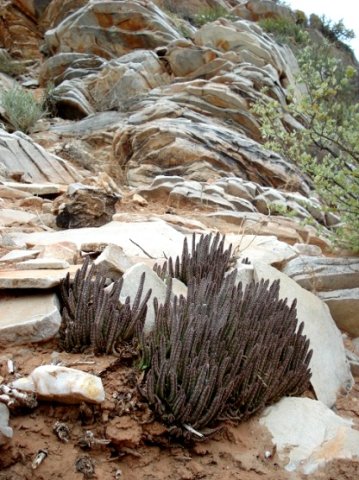Stapelia similis

The distribution of Stapelia similis lies in the Richtersveld. This is exposed land with sandy soil among rocks where extreme temperatures are typical.
The Richtersveld climate has some stark differences between the coastal and inland parts. Most of the year cold air caused by the Benguela Current moves inland from the south-west. Evaporation is low due to the cold. Little rain falls, but dense fog covers the land frequently to about 20 km inland. During summer heat the fog may clear or just rises, still blocking the sun. In winter the fog stays cold and low, as far inland as the central mountains.
Annual rainfall in some of the mountain areas is 300 mm, elsewhere down to below 50 mm per annum. East of the mountains, the sky is blue in bright sunlight, blazing relentlessly on the desert. When it isn’t, there may be the occasional, sudden convection storm; more likely just some “smoking dune” yielding sand that floats on the wind.
For a description of S. similis see the entries in the Stapelia Album (Williamson, 2010).

